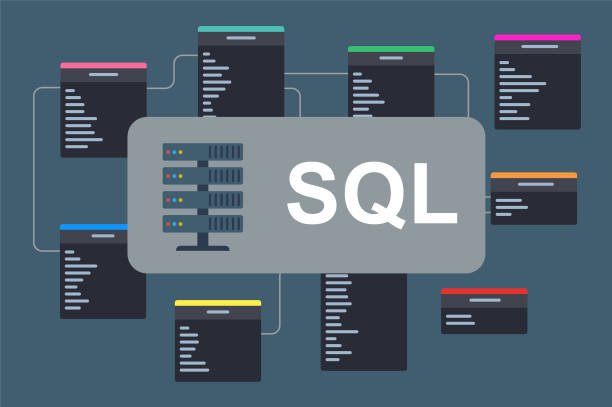Databases can be likened to complex puzzles, with each component intricately interrelated. Within the domain of SQL, comprehending and effectively employing CASCADE processes can greatly improve our ability to handle these linkages, particularly in the setting of relational databases. The CASCADE feature in SQL guarantees the integrity and consistency of your database by automatically propagating changes across interconnected tables. Now, let us explore the importance and practical uses of it.
1. The Core of CASCADE: Ensuring Data Integrity Remains Intact
- CASCADE refers to a process in which a series of actions or events are triggered and have a cascading effect, meaning that one action or event leads to the next one in a sequential manner. CASCADE is a referential action in SQL that specifically pertains to foreign keys. In the context of database management, it is employed to automatically propagate modifications made in one table to another.
- Ensuring Uniformity: By employing the CASCADE feature, any modifications or deletions made to a record in a “parent” database will be automatically propagated to the corresponding “child” tables. This guarantees the coherence and reliability of data throughout your database.
2. Deletion and Update – The CASCADE Twins
CASCADE on DELETE: When a record in the parent table is deleted, CASCADE guarantees the deletion of any associated rows in the child table. It is essential to prevent the occurrence of orphan records, as they can result in data abnormalities.
CASCADE on UPDATE: In the same way, when a key field in the parent table is modified, CASCADE ensures that the associated entries in the child table are also updated, thus preserving the accuracy and dependability of the data.
3. Strategic Implementation: When to Use CASCADE
Analysing Relationships: Gaining a comprehensive understanding of the connections between your tables is essential prior to applying CASCADE. It is most efficient in situations when there is a one-to-many relationship and the preservation of the relationship’s integrity is crucial.
To prevent unintentional mass deletions or updates, it is important to exercise caution when using the powerful CASCADE feature.
Navigating the Cascade Effect: SQL’s Data Management Symphony
4. Practical Implementation of CASCADE: Real-World Use Cases
E-Commerce Platforms: When a product category is deleted in an e-commerce database, all linked products are automatically removed, ensuring a well-maintained and pertinent product database.
User Management Systems: When a user account is removed, it triggers the deletion of all linked user preferences and settings, guaranteeing the elimination of any remaining data.
5. Comparing CASCADE, SET NULL, and RESTRICT: Making an Informed Decision
Exploring alternatives to CASCADE is essential in database design to determine the appropriate usage of SET NULL or RESTRICT, which provide distinct approaches for managing foreign key references.
Summary: The CASCADE Symphony in SQL
Mastering CASCADE in SQL is like to orchestrating a symphony when it comes to managing relationships. Comprehending each segment (table) and their interplay is necessary to establish a cohesive database environment.
Enhance Your Database Management: CASCADE provides you with a robust tool to guarantee the consistency, cleanliness, and coherence of your database.
This article explores the significance of CASCADE in SQL and its impact on database management. It’s designed to provide a deep understanding of how CASCADE works and when it’s most effectively used, empowering readers to make informed decisions in their database design and management strategies. By mastering CASCADE, one can ensure that their databases remain robust, consistent, and intelligently interconnected.
This example will demonstrate how CASCADE can be used in a foreign key relationship to automatically manage the deletion or update of related records.
Scenario: A Blogging Platform Database
- Users Table: Contains user information.
- Posts Table: Contains blog posts written by users.
SQL Tables Setup
Creating the Users Table:CREATE TABLE Users ( UserID INT PRIMARY KEY, UserName VARCHAR(100) );
Creating the Posts Table with CASCADE:CREATE TABLE Posts ( PostID INT PRIMARY KEY, UserID INT, PostTitle VARCHAR(200), PostContent TEXT, FOREIGN KEY (UserID) REFERENCES Users(UserID) ON DELETE CASCADE );
- In this table,
UserIDis a foreign key that referencesUserIDin theUserstable. - The
ON DELETE CASCADEclause ensures that if a user is deleted from theUserstable, all their posts in thePoststable are automatically deleted.
Inserting Sample Data
Inserting Users:INSERT INTO Users (UserID, UserName) VALUES (1, 'Harry'); INSERT INTO Users (UserID, UserName) VALUES (2, 'Bob');
Inserting Posts:
INSERT INTO Posts (PostID, UserID, PostTitle, PostContent) VALUES (101, 1, ‘Harry’s First Post’, ‘Content of the first post’);
INSERT INTO Posts (PostID, UserID, PostTitle, PostContent) VALUES (102, 1, ‘Harry’s Second Post’, ‘Content of the second post’);
INSERT INTO Posts (PostID, UserID, PostTitle, PostContent) VALUES (103, 2, ‘Bob’s Post’, ‘Content of Bob’s post’);
Demonstrating CASCADE in Action
Deleting a User:DELETE FROM Users WHERE UserID = 1;
- This deletion will automatically remove all posts in the
Poststable whereUserIDis 1 (i.e., Harry’s posts). - Bob’s post (UserID = 2) remains unaffected.
Checking the Posts Table:SELECT * FROM Posts;
This will show only Bob’s post since Harry’s posts have been cascaded (automatically deleted) when we deleted Harry from the Users table.
Conclusion
In this example, the use of CASCADE in the Posts table ensures that when a user is deleted from the Users table, all related posts in the Posts table are automatically removed. This maintains referential integrity and prevents orphan records (posts without a corresponding user) in the database.

